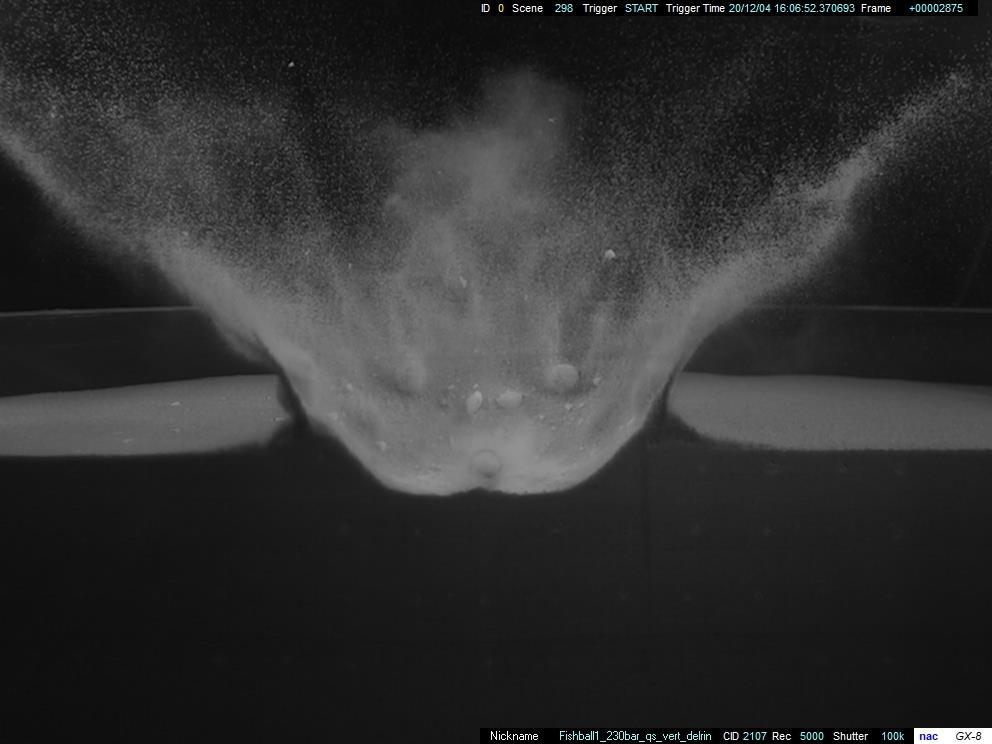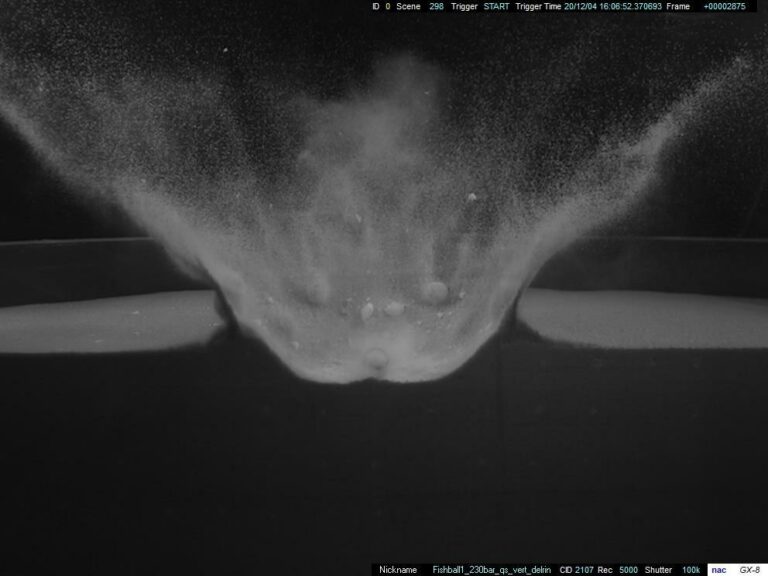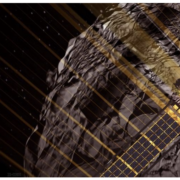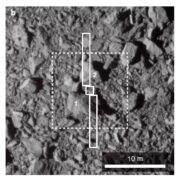A recent study led by the Centro de Astrobiología (CAB), CSIC-INTA, forms a vital part in the preparations for the NASA’s mission DART (Double Asteroid Redirection Test), that will impact the asteroid Dimorphos on the 27th of September. This mission aims to test the concept of a kinetic impactor to deflect an eventual future Earth-threatening asteroid. The CAB results are published in the journal EPSL (Earth and Planetary Science Letters).

Several experiments, carried out in the EPIC chamber (Experimental Projectile Impact Chamber) of the Centro de Astrobiología (CAB), CSIC-INTA, have served to validate one of the main numerical codes used in simulations that predict what the effects of NASA’s DART kinetic impactor will be once it crashes into the asteroid Dimorphos.
In the words of Jens Ormö, head of the CAB (CSIC-INTA) Laboratory for Experimental Impacts, “Once confirmed that numerical simulations can reliably predict the outcome of the DART impact, we can use them in planetary defense planning on the day a real threat appears.”
The asteroid Dimorphos and the DART-Hera mission
Near Earth Objects (NEOs) are comets and asteroids that move in orbits that put them in the vicinity of our planet.
Asteroids smaller than 50 km are often considered to be so-called “rubble-pile” objects formed by rocks of different sizes held together only by self-gravity or small cohesive forces. However, the majority of NEOs are in the order of hundreds of meters. Although relatively small, because of their abundance such asteroids are the most likely type of NEOs to pose a threat to Earth, so knowing more about their properties and behavior will help us prevent hypothetical future collisions with Earth.
To test one potential method to divert an asteroid, NASA launched in November 2021 the DART mission, a controlled experiment directed towards a binary asteroid system known as Didymos 65803. The mission envisions crashing the space probe into the system’s moonlet, Dimorphos, with the intention of testing whether the kinetic energy of the impact could successfully change its orbit around the Didymos. This will tell if a kinetic impactor can be used to deflect such an object on a collision course with Earth.
Subsequently, in 2024, the European Space Agency (ESA) will launch the Hera mission to study the consequences of the impact of the DART mission and characterize in detail the physical properties and orbit of the asteroid Dimorphos.
CAB (CSIC-INTA) is part of the joint NASA-ESA space mission called DART-Hera DART-Hera.
How a rubble-pile asteroid would react to an impact
Fragments that emerge from the collisions between asteroids main join together to form “rubble-pile” asteroids. For example this is possibly how the asteroids Ryugu and Bennu were formed.
The irregular distribution of mass and strength of these “rubble-pile” objects makes them especially difficult when it comes to anticipating the effects of a collision. That is why specific laboratory experiments are essential. “Although Dimorphos will be a good test, we cannot wait until the impact of DART to develop the codes, it is necessary to have them ready beforehand to be able to accurately confirm the results,” says Isabel Herreros, member of the team and researcher at the CAB (CSIC-INTA).
The experiments carried out by the team and whose results have been published in the journal EPSL (Earth and Planetary Science Letters), take into account, for example, the effects of the presence of grains of different sizes within the target (for example, large objects embedded in a finer grained groundmass), porosity, cohesion, friction, etc.
All the laboratory impacts successfully validated the SPH code (Smoothed-Particle Hydrodynamics), that is one of the codes used in the computational method intended to simulate the DART impact. The numerical simulations reproduced with great fidelity the shots carried out in the experiments of the EPIC chamber.
Experiments and results
The research team conducted three experiments with impact velocities of about 400 meters per second with different target configurations: one with sand and larger objects (“boulders”) distributed beneath the entire surface with a “boulder” at the point of impact; another similar, but with “boulders” only in one of the halves and without a “boulder” at the point of impact; and the last one only with sand for reference.
The conclusions confirm that boulders in the target material (i.e., “rubble-pile”) affect the material ejection, the shape of the crater and lowers momentum transfer (i.e. the effective “push” of the asteroid). On the other hand, when they are not directly hit by the projectile, the boulders incorporated into the sand are displaced or ejected, but do not fragment. This suggests that impacts on these types of asteroids will redistribute boulders and finer-grained material in a heterogeneous manner, which could result in the segregation of boulders from fine-grained material. This also helps to explain boulder patterns observed around craters on Ryugu and Bennu, which can tell us a little more about the history of the asteroids’ current appearance.









